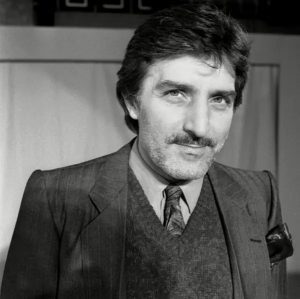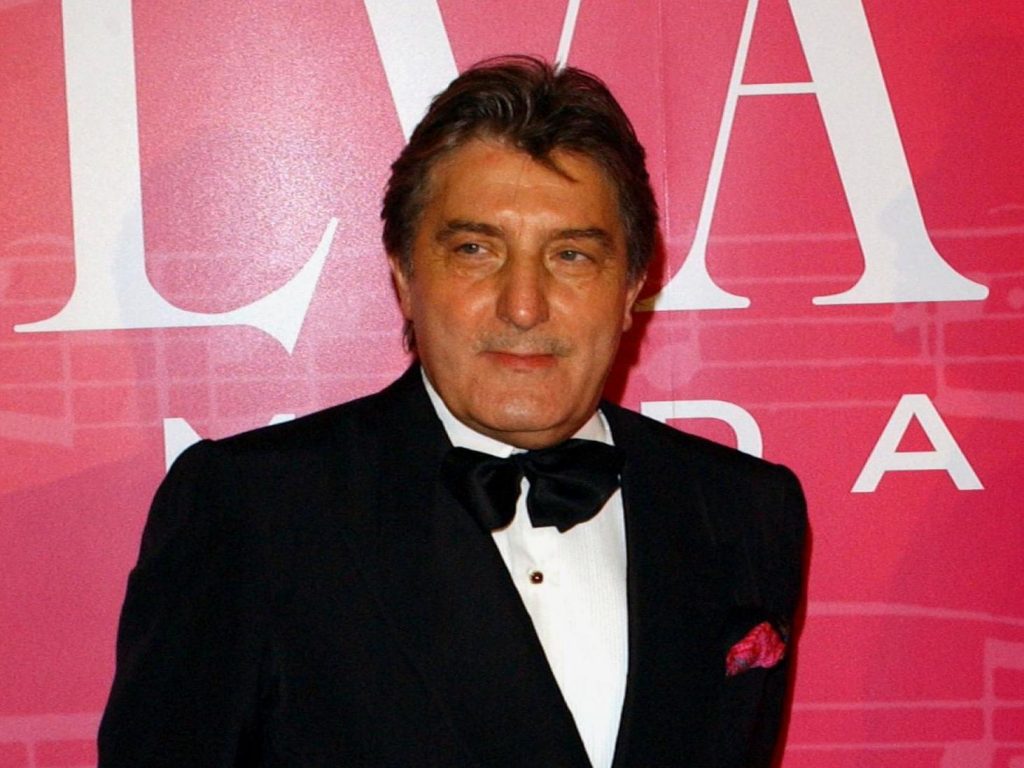Summary
Emanuel Ungaro is an Italian fashion designer, born and raised in France, Ungaro has been interested in the creation of clothing from a very young age. He came from a family of tailors and established his fashion house in 1965 after working under the designer Cristóbal Balenciaga. Within a few years Mr. Ungaro’s creations were being worn by A-listers like Jacqueline Kennedy Onassis and being seen in films on Catherine Deneuve (in “Le Sauvage,” 1975), Gena Rowlands (“Gloria,” 1980) and other actresses. In 2005, he sold a stake of his fashion house to Asim Abdullah, a venture capitalist, and retired.
Biography
Emanuel Ungaro was born in 1933 in Aix-en-Provence in France. His Italian father, who fled the Fascist uprising in the thirties, was a tailor and ensured the young Emanuel’s first toy was a sewing machine. At the age of 23, the budding designer moved to Paris and two years later in 1958 began as an assistant to Cristobal Balenciaga. In 1965 he set up his own couture house and became known for his flamboyant use of pattern and elegant draping, creating pieces with an emphasis on the comfortable and flattering encasement of the female form.
Ungaro quickly garnered a high profile celebrity following, including Jacqueline Kennedy and Catherine Deneuve, and the business developed healthily until the early nineties. The grunge decade saw Ungaro’s colourful ruffles and exuberant palette replaced by understated tailoring at the height of fashion and the company began to flounder.
In 1996, Ungaro sold a majority stake of his business to Salvatore Ferragamo SpA with the understanding that the Italian label would develop a lucrative handbag and shoe division to support the loss-making couture business. From 1965 to 2004 his collections had steadily showcased remarkable textiles – he was always fabric-led, interested from the start in exploring experimental novelties coming off the loom or print-roller.
Brand
Three years after moving to Paris, Ungaro began designing for the House of Cristóbal Balenciaga for three years before quitting to work for Courrèges. Four years later, in 1965 with the assistance of Swiss artist Sonja Knapp and Elena Bruna Fassio, Ungaro opened his own fashion house in Paris.
Ungaro launched his first menswear collection, Ungaro Uomo, in 1973, and his first perfume, Diva, 10 years later in 1983. Ungaro was a participant in The Battle of Versailles Fashion Show held on November 28, 1973. Later followed the perfumes Senso (1987), Ungaro (1991) and Emanuel Ungaro For Men (1991). In 1996, sold a majority stake of his fashion house to Salvatore Ferragamo with the understanding that the Italian label would develop a lucrative handbag and shoe division to support the loss-making couture business. In 1997, Ungaro, Ferragamo and Bulgari created a new company: Emanuel Ungaro Parfums. The new perfumes to follow were Fleur de Diva (1997), Desnuda (2001) and Apparition (2004).
In 2005, Ungaro retired and sold the label to internet entrepreneur Asim Abdullah for $84 million.
After the sale, the label languished with a revolving door of designers, the last of which, Esteban Cortazar, who was appointed in 2007, was fired two years later after his refusal to work with actress Lindsay Lohan. Subsequently, Lohan was appointed Artistic Director, working with new head designer Estrella Archs, who was hired hastily to replace Cortazar. The introduction of Lohan, which was meant to give the label publicity, was received with shock and dismay in Paris Fashion Week 2009. In 2010, during Paris Fashion Week, Lindsay Lohan announced that she was no longer working for or with Ungaro, and that she could not comment on the matter because of legal issues. Her work was heavily criticized and soon after the fashion house was looking for a buyer.
In 2009, the label had sales of about $200 million from fragrance and less-expensive lines sold in Asia, but the runway collection has been losing money for years. In April 2010, it was announced that Archs had been dismissed and British designer Giles Deacon would be taking over as creative director.
In 2012, the Italian company Aeffe took over the prodEmanuel Ungaro is an Italian fashion designeruction and distribution of Ungaro products. In September 2012, Fausto Puglisi was named creative director of Ungaro, and the brand announced its comeback to the Paris Fashion Week. In 2015, Ungaro launched a smart ring that, connected to a phone, dimly lights up when a selected few contacts call. In March 2017, Fausto Puglisi was replaced by Marco Colagrossi (formerly women’s wear at Giorgio Armani) as creative director of Ungaro.
References
https://en.wikipedia.org/wiki/Emanuel_Ungaro
https://www.vogue.co.uk/article/emanuel-ungaro-biography
https://www.theguardian.com/fashion/2019/dec/25/emanuel-ungaro-obituary
https://www.nytimes.com/2019/12/23/fashion/emanuel-ungaro-dead.html





